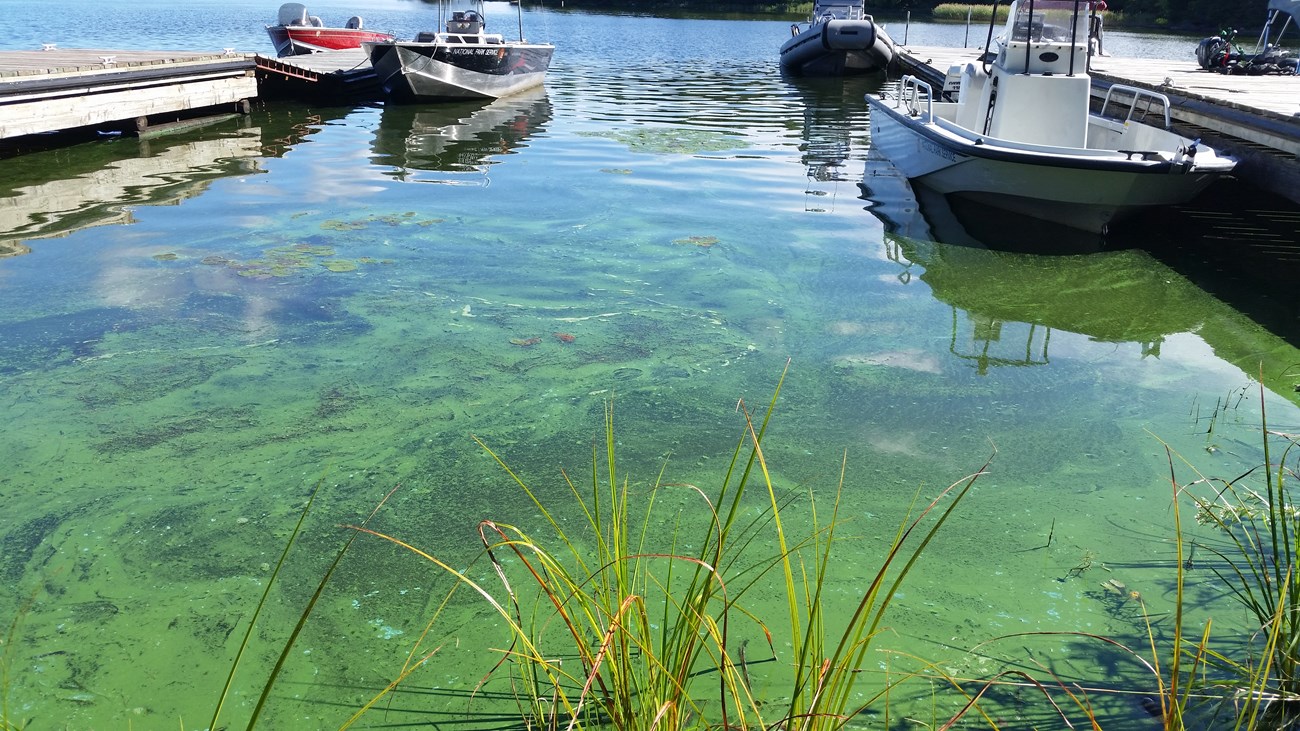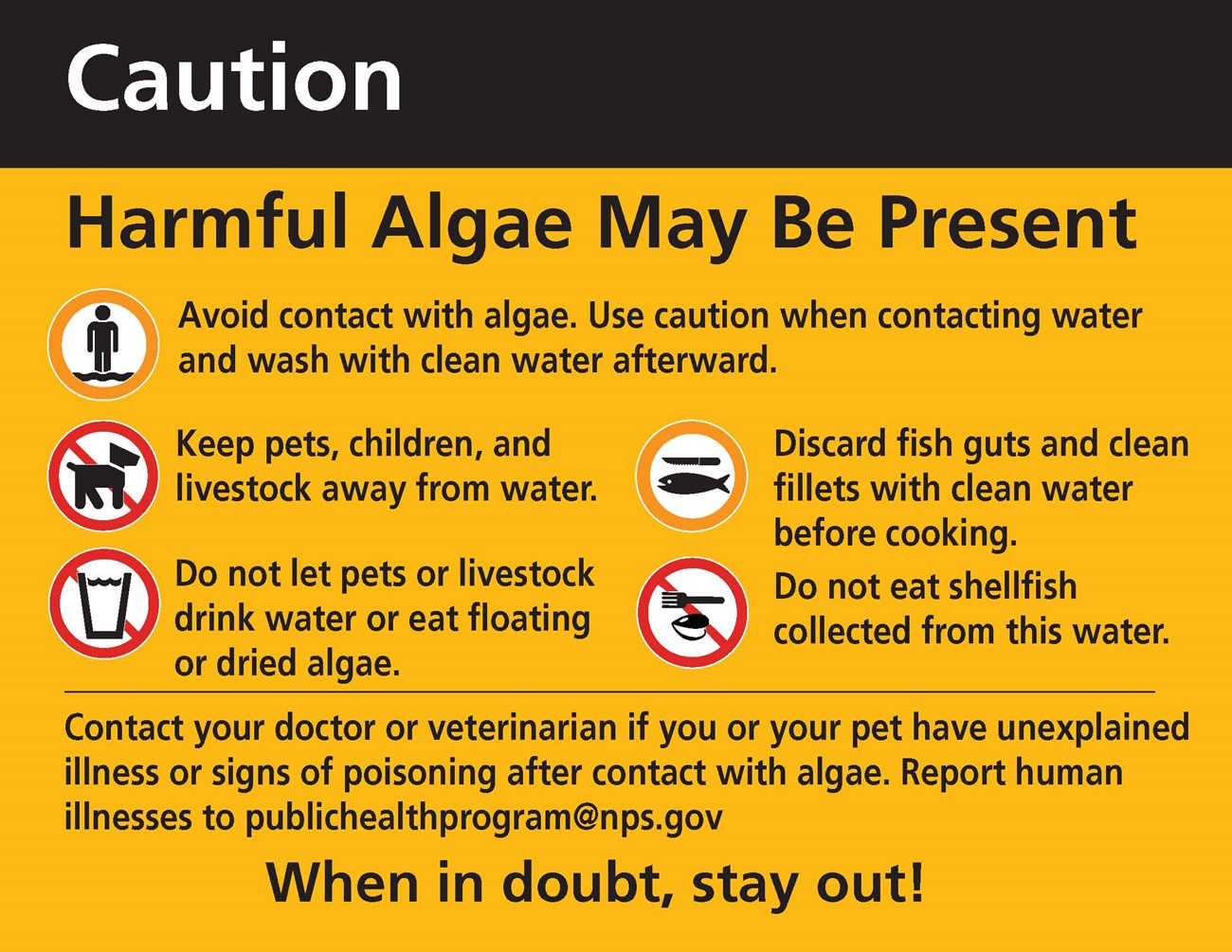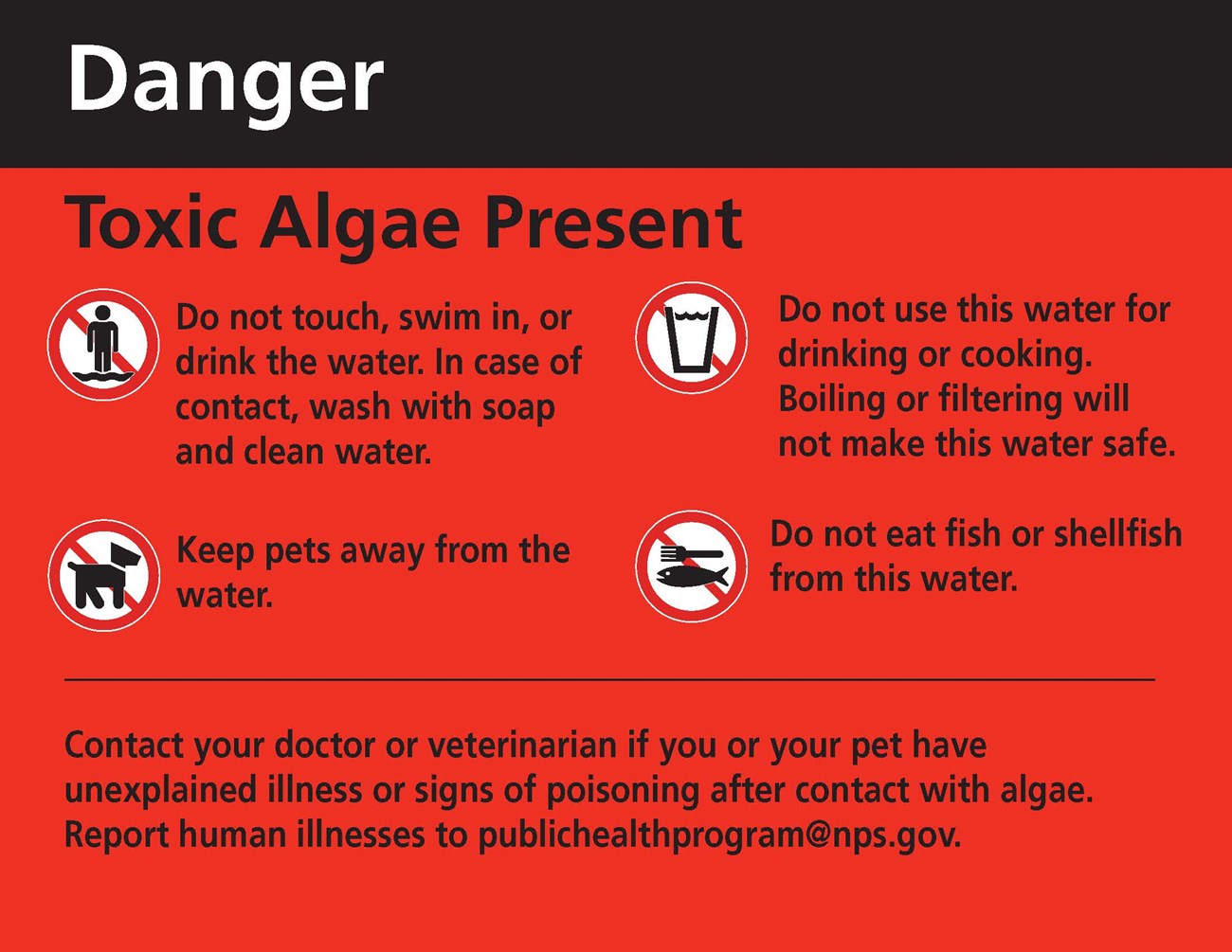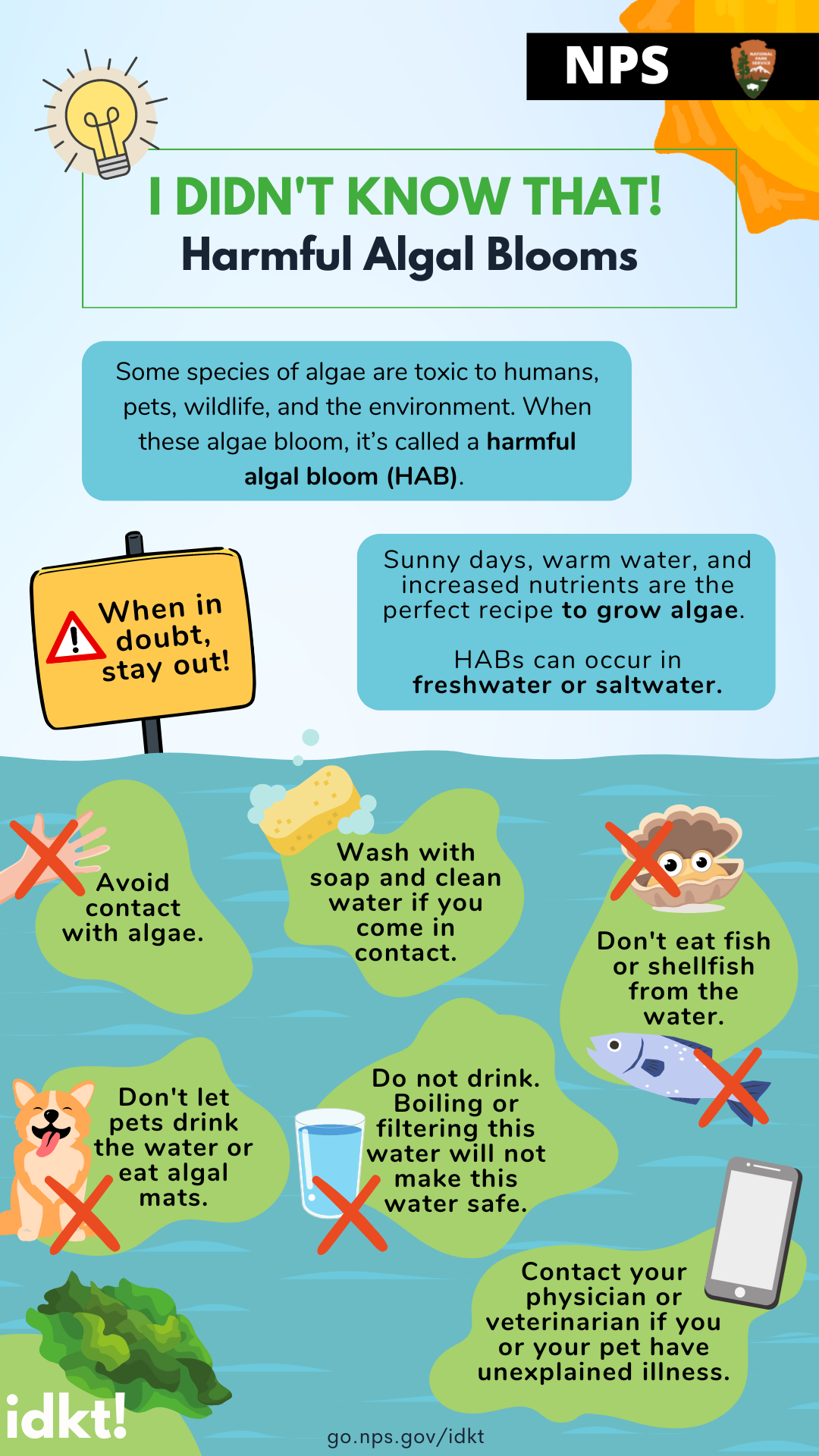Last updated: December 23, 2024
Article
I Didn't Know That!: Harmful Algal Blooms

Whew! When that summertime heat gets to you, you want nothing more than to spend the day in the water. But when you get there... the water just looks.... a little off. The surface water is discolored, there’s a stinky smell in the air, and there are patches of mat-like accumulations on the shoreline. Do you try to wade through the layer of yuck to get to a clear spot or should you just stay out? Your dogs don't care about cleanliness, maybe it's okay for them?
Unfortunately, you, my friend, are looking at a harmful algal bloom (HAB). You and your pets should stay away!
What is a Harmful Algal Bloom?
Sunny days, warm water, and increased nutrients are the perfect recipe to grow algae. When algae grow rapidly, it’s called an algal bloom. Some algae growth is important to a healthy ecosystem. Many animals eat algae, and most species of algae are not dangerous. Some species of algae, however, are toxic to humans, pets, wildlife, and the environment. When these algae bloom, it’s called a harmful algal bloom (HAB).
What You Can Do
Climate change and increased lawn and agricultural runoff into waters have created ideal conditions for HABs, and HABs are occurring more often in more places than ever before. But the good news is there are precautions you can take to keep you and your pets safe, and you can help prevent HABs in your own backyard.

NPS Photo
Preventing HABs in Your Community
- Reduce your use of fertilizers, pesticides, and herbicides on your lawn or garden.
- Plant native plants to minimize the need for fertilizers, pesticides, and herbicides. (Bonus: This also helps pollinators and native plants are easier to keep alive!)
- Pick up and properly dispose of pet waste.
Staying Safe Around HABs

If a HAB may be present:
- Avoid contact with algae. Use caution when contacting water and wash with clean water afterwards.
- Keep pets, children, and livestock away from water.
- Do not let pets or livestock drink water or eat floating or dried algae.
- Discard fish guts and clean fillets with clean water before cooking.
- Do not eat shellfish collected from this water.
- Contact your doctor or veterinarian if you or your pet have unexplained illness or signs of poisoning after contact with algae. Report human illnesses to publichealthprogram@nps.gov.
- When in doubt, stay out!

If a HAB is present:
- Do not touch, swim in, or drink the water. In case of contact wash with soap and clean water.
- Keep pets away from the water.
- Do not use this water for drinking or cooking. Boiling and filtering will not make this water safe.
- Do not eat fish or shellfish from this water.
- Contact your doctor or veterinarian if you or your pet have unexplained illness or signs of poisoning after contact with algae. Report human illnesses to publichealthprogram@nps.gov.

Pass It On!
Did you learn something new? Pass it on! Protecting our ecosystems is a job for us all, but there’s no way for everyone to be an expert in everything. That’s why sharing knowledge is so important!
Download or screenshot this card to share with a friend or help you stay safe around HABs.
Check out other I Didn’t Know That! Topics.
Some species of algae are toxic to humans, pets, wildlife, and the environment. When these algae bloom, it's called a harmful algal bloom (HAB).
Sunny days, warm water, and increased nutirents are the perfect recipe to grow algae.
HABs can occur in freshwater or saltwater.
When in doubt, stay out!
- Avoid contact with algae.
- Wash with soap and clean water if you come in contacts.
- Don't eat fish or shellfish from the water.
- Don't let pets drink the water or eat the algal mats.
- Do not drink. Boiling or filtering this water will not make it safe.
- Contact your physician or veterinarian if you or your pet have unexplained illness.
